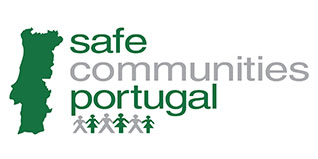Number of rural fires is the lowest since 2014
Lisbon, 25 Jul 2024 (Lusa) – A total of 1,812 rural fires were recorded between 1 January and 30 June this year, causing 2,964 hectares of burnt area, the lowest number of fires since 2014, according to a report released today.
According to the first provisional report on rural fires from the Institute for Nature Conservation and Forests (ICNF), of the 2,964 hectares of burnt area recorded, 577 hectares are settlements, 1,664 are scrubland and 723 are agricultural.
According to the data collected, comparing the figures for the year 2024 with the history of the previous 10 years, it is noted that there were 60% fewer rural fires and 80% fewer burnt areas compared to the annual average for the period between 2014 and 2023.
“The year 2024 presents, up to June 30, the lowest number of fires and the second lowest value of burned area, since 2014”, highlights the report.
The distribution of the number of rural fires by class of burnt area shows, on the other hand, that in 2024, fires with a burnt area of less than 01 hectare are the most frequent (83% of all rural fires). As for larger fires, there were three fires with a burnt area of between 100 and 500 hectares.
“Large fires are considered whenever the total burnt area is equal to or greater than 100 hectares. Until June 30, 2024, three fires were recorded in this category, which resulted in 615 hectares of burnt area, around 21% of the total burnt area”, the report states.
Regarding the causes, the report states that of the 1,812 rural fires recorded in 2024, 1,254 were investigated and the process of determining the causes has been completed (69% of the total number of fires – responsible for 78% of the total area burned). The ICNF indicates that the most common causes for the total number of fires investigated (1,254) are extensive burning of shrubland (20%) and arson (19%).
“Of these, the investigation allowed the attribution of a cause for 969 fires (77% of the fires investigated – responsible for 66% of the total area burned)”, says the document.
“Together, the various types of fires and burnings represent 57% of the total causes determined. Rekindlings represent 3% of the total causes determined, a lower value compared to the average of the previous 10 years (8%)”, mentions the report.
From the analysis by district, the districts with the highest number of fires, in decreasing order, are Porto (278), Braga (186) and Viana do Castelo (186).
“In either case, the fires are mostly small in size (they do not exceed 1 hectare of burnt area). In the specific case of NUTS3 of the Porto Metropolitan Area, the percentage of fires with less than 1 ha of burnt area is 91%”, highlights the report.
In contrast, the most affected district, in terms of burnt area, is Viana do Castelo with 657 hectares, around 22% of the total burnt area, followed by Braga with 418 hectares (14% of the total) and Évora with 392 hectares (13% of the total).
At the same time, the municipalities with the highest number of fires are all located north of the Tagus, with the exception of the municipality of Almada, and are characterized by high population density, the presence of large urban agglomerations or the traditional use of fire in agroforestry management.
“The report states that the burnt area in the 20 most affected municipalities represents 74% of the total area, with the municipality of Reguengos de Monsaraz standing out. The municipalities of Montalegre, Arcos de Valdevez, Aljustrel, Arouca and Melgaço also stand out.
The total number of occurrences in these 20 municipalities represents 21% of the national total.
The report also highlights that this year and to date, June is the month with the highest number of rural fires, with a total of 660 fires, which corresponds to 36% of the total number recorded.
To date, June is also the month with the largest burnt area, with 1,041 hectares (35% of the total recorded).
